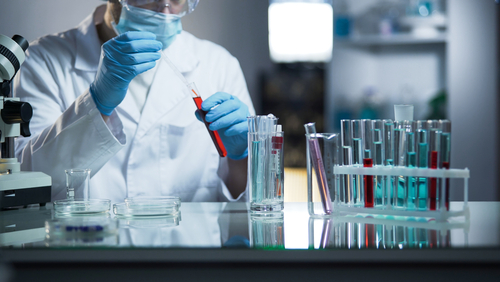Dual Inhibition of 2 Proteins Reduces Lung Damage in IPF Rat Model, Study Shows

A mechanism triggered by the activation of two specific proteins called JAK2 and STAT3 was found to contribute to the damaging cellular transformations that occur in idiopathic pulmonary fibrosis (IPF), a study reports.
Blocking this signaling pathway reduced the levels of lung damage in a rat model of IPF, and may represent an attractive strategy to prevent disease progression, according to the researchers.
The study, “The JAK2 pathway is activated in idiopathic pulmonary fibrosis,” published in the journal Respiratory Research.
IPF is a chronic inflammatory disease characterized by scarring, or fibrosis, of the lung tissue. Several studies have revealed some details on the complex underlying mechanism involved in the progression of this disease, but there are still limited treatment options for IPF patients.
To gain a better understanding of the processes involved in IPF development, researchers in Spain compared the molecular patterns in lung cells collected from patients and healthy controls.
A total of 12 patients who underwent organ transplant surgeries were recruited from the Thoracic Surgery and Pathology Services at the University General Consortium Hospital and University and Polytechnic Hospital La Fe in Valencia, Spain. Healthy lung tissue samples were obtained from the organ transplant program at the hospitals.
Comparison of the samples revealed that IPF patients had increased levels of the JAK2 and STAT3 proteins in the lungs, which were both in an activated state, whereas in healthy controls, they were almost undetectable and inactive. A more detailed analysis further showed that in IPF patients, these proteins were mostly found in the damaged areas of the lungs, implying that they play a role in the harmful IPF-related process.
Experiments with laboratory cell lines revealed that transforming growth factor beta 1, or TGF-β1, an inflammatory molecule that is a key driver of lung fibrosis, could trigger JAK2 and STAT3 activation. This was found to support the transformation of lung tissue cells into collagen-producing cells, a hallmark of the fibrotic process, which is characterized by excessive collagen accumulation.
By using chemical inhibitors of both JAK2 and STAT3, researchers could prevent the transformation of cells and reduce collagen levels in samples from IPF patients. Similar results were obtained when they genetically blocked the production of JAK2 and STAT3 proteins.
While inhibiting JAK2 and STAT3 at separate times did have a positive effect, blocking their activity at the same time was found to be the most effective strategy.
Next, the researchers treated a rat model of IPF (the bleomycin-induced IPF model) with daily administrations of a chemical inhibitor that blocked the activity of both JAK2 and STAT3. The treatment reduced the levels of fibrosis in the lungs of the animals, as well as the amount of pro-inflammatory cells and inflammatory-related proteins, such as IL-6 and IL-13. Collagen deposition in the lungs was also inhibited.
Computed tomography (CT) scans revealed significantly less lung tissue damage upon treatment with the JAK2/STAT3 inhibitor.
Based on the findings, the researchers concluded: “JAK2 and STAT3 are activated in IPF, and their dual inhibition may be an attractive strategy for treating this disease.”
JAK2 and STAT3 inhibitors are currently being assessed in clinical trials as potential treatments for cancer and inflammatory diseases. “The results provided in this study may have direct translational implications [into clinic development],” the researchers wrote.







